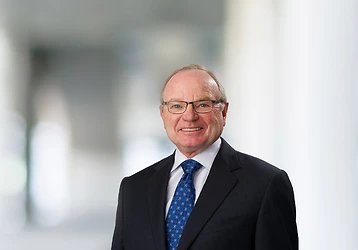The End of LIBOR – Part 2
As we previously reported in our “End of LIBOR – Part 1”, for several years US banking regulators have been preparing for the replacement of LIBOR as a lending index rate. This is a major undertaking as LIBOR is the index on an estimated $400 trillion of financial products.
Under the auspices of the Federal Reserve Bank of New York, a working committee was formed to make recommendations regarding possible replacement indexes and the transition away from LIBOR. This committee – the Alternative Reference Rates Committee (“ARRC”) – has issued many detailed reports and recommendations. In particular, the ARRC has recommended (but does not propose a mandate) that the Secured Overnight Finance Rate (“SOFR”) become the replacement index rate.
The timetable for replacement of one and two month LIBOR rates was set for December 31, 2021 or sooner if LIBOR is no longer deemed a reliable index. Other LIBOR rates (often referred to as “tenors”) such as three, six and twelve month rates would be phased out over the next eighteen months.
These issues and transition plans are of significant import to borrowers whose LIBOR-based loans or swap agreement straddle the LIBOR expiration dates (“legacy loans”), as each set of loan documents determines the “alternate rate”, in the event that LIBOR is no longer available or deemed by that lender reliable. Many alternate rate provisions are drafted under the presumption that if a LIBOR based index rate is no longer available, there are serious financial market instabilities and the alternate rate is a much less favorable index, such as a prime rate index + bps or a percentage. Further, existing LIBOR-based swap agreements are unclear on the calculation of termination fees in the event LIBOR is no longer available to do so. We are recommending awareness and sufficient runway for borrowers to plan and properly address these changes.
At this point, many important and complicated issues remain unresolved. Among other issues, many banks have concerns about the costs to them of using SOFR in a time of economic instability and some seem to be taking a “wait and see” attitude toward conversion to a new index rate and what new index will be used. The Fed has not mandated SOFR as a replacement index, so lenders are free to use whatever rate and implementation program they choose. Also, it is not clear how lenders will document any transition to a new index.
This has left borrowers in a dilemma. While borrowers are faced with a possible loss of one and two month LIBOR by the end of 2021 and the possibility of being switched to a much more expensive backup rate under existing loan documents, most lenders appear to still be considering their options and formulating their plans. Borrowers should be aware of the changing landscape and stay in touch with their lenders for developments in this area to avoid unanticipated surprises and potential crush of borrowers attempting to beat the LIBOR rate expiration as and when determined by that lender.
There are additional nuances and anticipated updates that we will continue to cover in our End of LIBOR series of Client Alerts.
David Hipp
248.593.3026
hipp@butzel.com
Geoffrey Gallinger
248.258.1095
gallinger@butzel.com
Thomas Kabel
248.258.2602
hipp@butzel.com
Geaneen Arends
313.225.7022
arends@butzel.com
Jennifer Consiglio
248.593.3023
consiglio@butzel.com
Laura Johnson
248.593.3014
johnson@butzel.com















